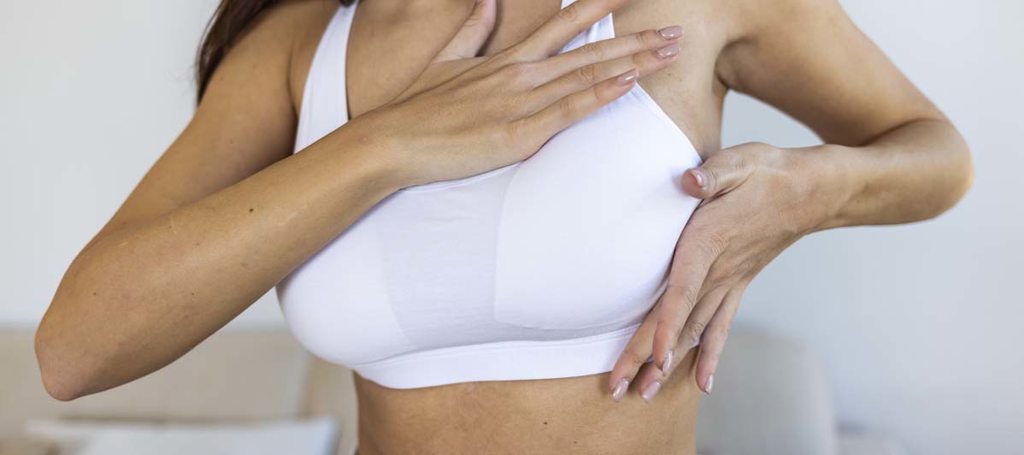Self-Exams Are an Important Way of Detecting Breast Cancer Early

Nearly 25% of breast cancer survivors detected it through self-examination. A breast self-exam is a series of physical and visual examinations to check the breasts for signs and symptoms of cancer, and it is a key part of the toolbox in detecting breast cancer early.
How often should I perform a self-exam?
The National Breast Cancer Foundation recommends that adult women of all ages perform self-exams at least once a month. The best time to perform an exam is about three to five days after your period starts. For women who are post-menopausal, a self-exam should ideally be performed on the same day of each month.
How do I perform a self-exam?
“A breast self-exam helps you become familiar with how your breasts normally look and feel so that you can identify changes or abnormalities,” said Natalie Furgiuele, MD, FACS, a board-certified surgeon and director of the Penn Highlands Mon Valley Breast Program.
Before your first exam, you may find it helpful to discuss how to do it with your healthcare provider.
Step 1: Look at your breasts. Sit or stand naked in front of a mirror with your arms at your sides. Face forward and look for puckering, dimpling or changes in size, shape, symmetry or direction (pushed inward instead of sticking out). Visually inspect your breasts while your hands are pressed down on your hips, then raised overhead and finally with your palms pressed together. Lift your breasts to see if ridges along the bottom are symmetrical.
Step 2: Use your hands to examine your breasts. You can do this while lying down or standing up. If lying down, lie down on your back on a flat surface. If standing up, go into the shower and lather your fingers and breasts with soap to help your fingers glide smoothly over your skin.
Examine your breasts by using the pads of your middle three fingers. Use light pressure to feel the tissue closest to the skin, medium pressure to feel a little deeper, and firm pressure to feel the tissue closest to the chest and ribs. Using a pattern, such as a circular motion can help ensure that you cover every part of the breast.
What should I do if I find something?
“If you notice any changes in your breasts, such as a new lump, sore spot, nipple discharge or changes in the appearance of the skin, talk to your healthcare provider,” said Dr. Furgiuele. “They will likely perform a clinical breast exam to determine if diagnostic tests such as ultrasounds or mammograms are necessary.”
While a self-exam is an important part of early detection of breast cancer, it should not take the place of regular mammograms and clinical breast exams. Talk to your healthcare provider about a screening plan that is right for you.
As part of your breast health, it is important to schedule regular mammograms because mammograms can often detect breast cancer in its earliest stages before it can be felt during a self-exam. Penn Highlands Healthcare offers state-of-the-art mammogram technology in private and comfortable settings. To learn more, visit www.phhealthcare.org/pink.

